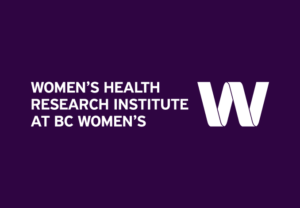
- Briefly, what research will you be disseminating with the MSFHR Reach Award?
Our WHRI study explored the meaning of wellness for women with congenital adrenal hyperplasia (CAH). We learned about many aspects of wellness by engaging with these women. Early findings from both the literature and women’s narratives highlighted, that menstrual wellness for women with CAH is constrained by ongoing menstrual taboos, similar for all women. Additional stressors include the impact of metabolic processes on menstruation, cycle variation, and the impact these have across the life course. Introducing health concepts linked to menstrual wellness (for all women who may face health challenges) as early as possible can help to reduce stigma and isolation as well as promote early body wellness conversations.
- How will you be disseminating it?
Specifically, we aim to build on ‘standard’ menstrual information to design a simple infographic that also lays out the important factors of concern for women with CAH. In addition, we have to begin to look at how to situate such information since across Canada we do not have clearly defined support networks for individuals with CAH. We will launch the infographic in conjunction with provincial events for example Women’s Day 2019 and use a range of interactive media approaches. Since our team is geographically dispersed, we will connect with wider audiences globally in order to receive feedback, update, and refresh out infographic.
- Research users are expected to play a key role in Reach Award-funded projects. How did your patient partner get involved with the project and what will their role look like within your team?
Our patient partner(s) were crucial in generating the primary study questions and also giving perspective, insight, and sharing their knowledge. They became involved via clinical networks, support and advocacy groups. Moving forward, as our partners, there is opportunity to disseminate information, co-write and update the infographic, present to a range of audiences as well as learn more about patient engagement research as active team members.
- Why is it important to share this research?
As the knowledge to action cycle acts as a framework, both iterative and informative, we have recognized the barriers to knowledge translation within this area. This has resulted in a range of communication challenges, complex and perhaps misjudged decision-making, and overlooked opportunities to direct research towards areas important to women with CAH. In recognizing and beginning to develop knowledge translation approaches that openly address menstrual taboo linked to gender we can energize wider community support to begin to have informal (and clinical) dialogues about the situation of menstrual experiences in diverse bodies.
- When/where can we expect to see your research disseminated?
You can expect to see our infographic in the public space, we aim to use multi-media, key provincial events and the powerful voice of the Public to help share our messaging. We hope, over time, the infographic will have a place in health care dialogues and our aim is to freely share with our global networks, advocacy groups, and key Canadian organizations.